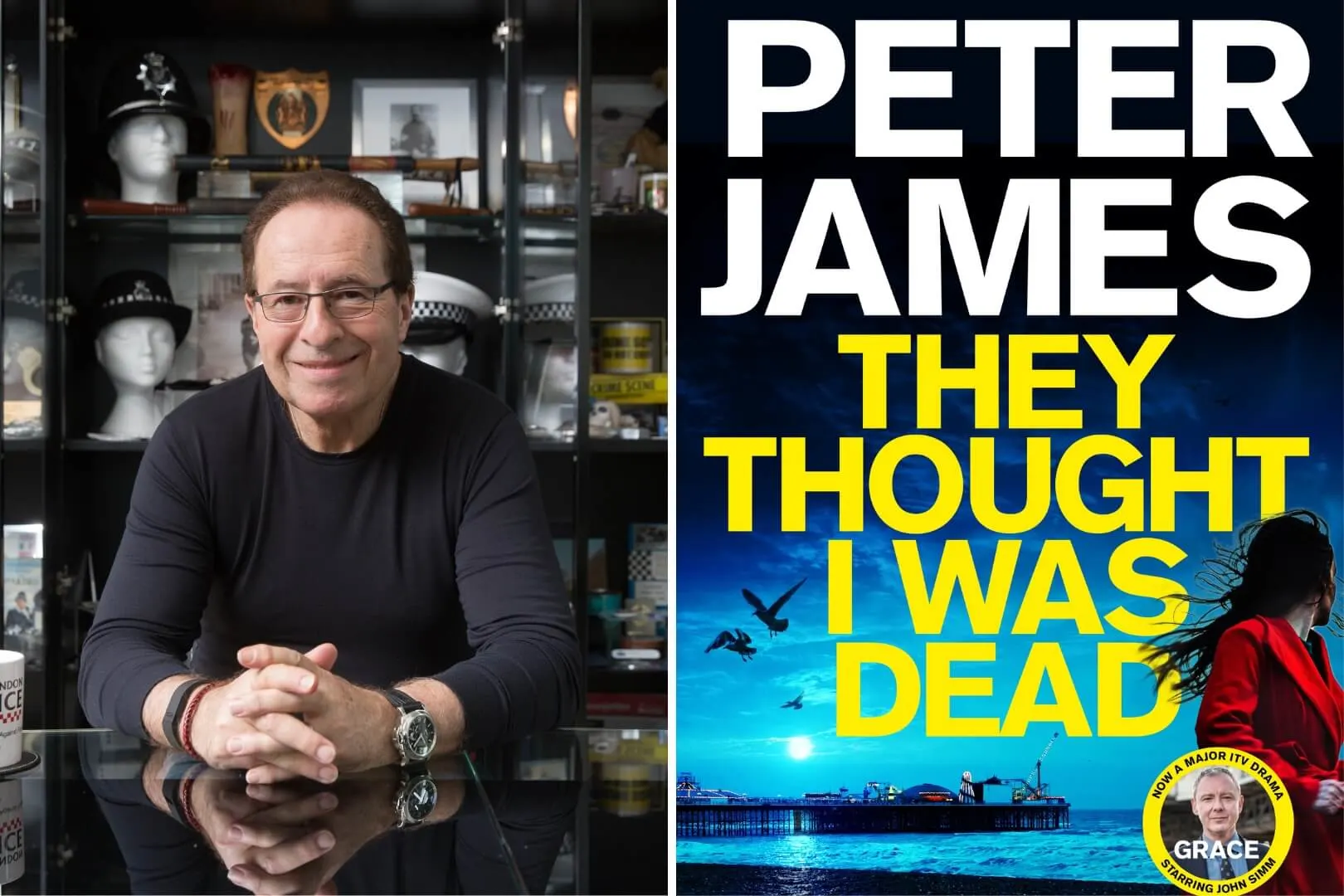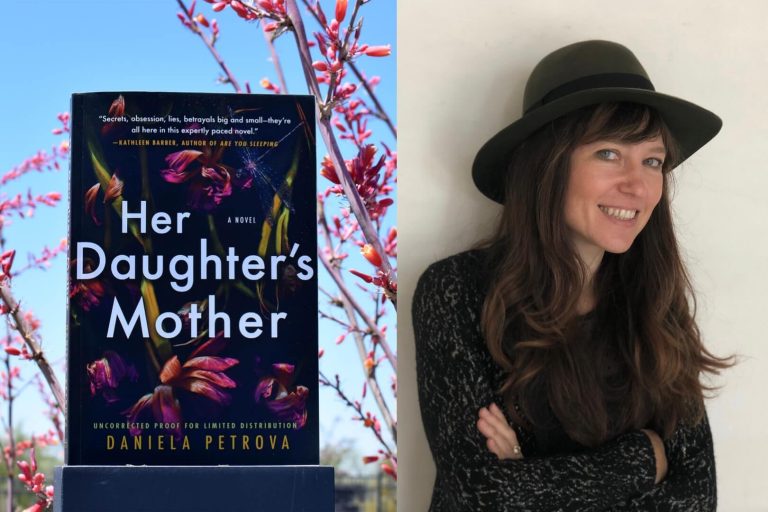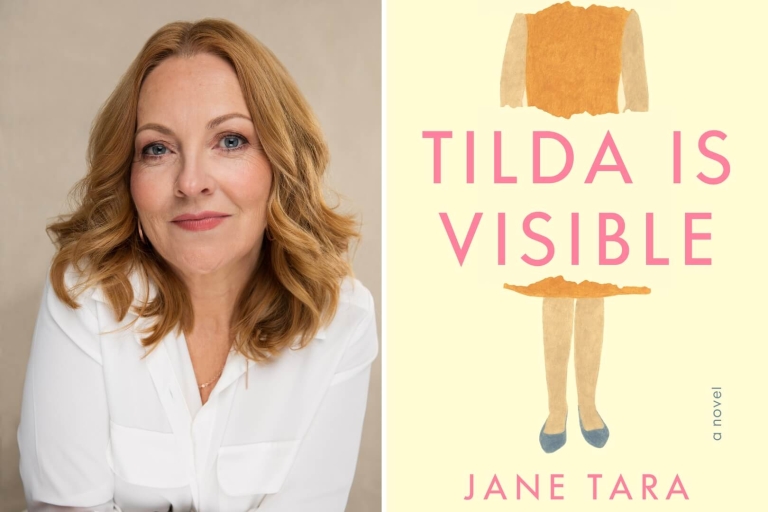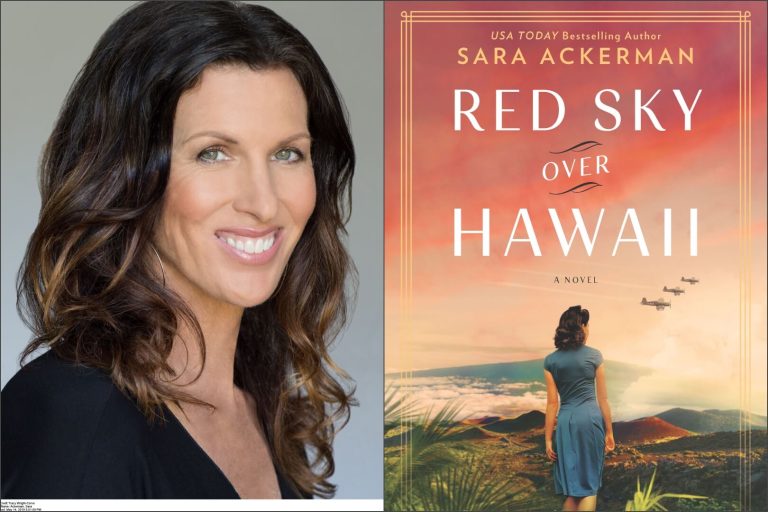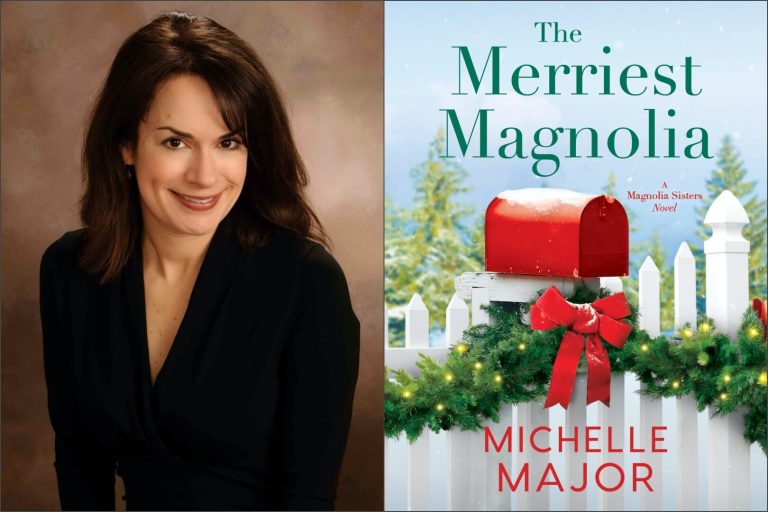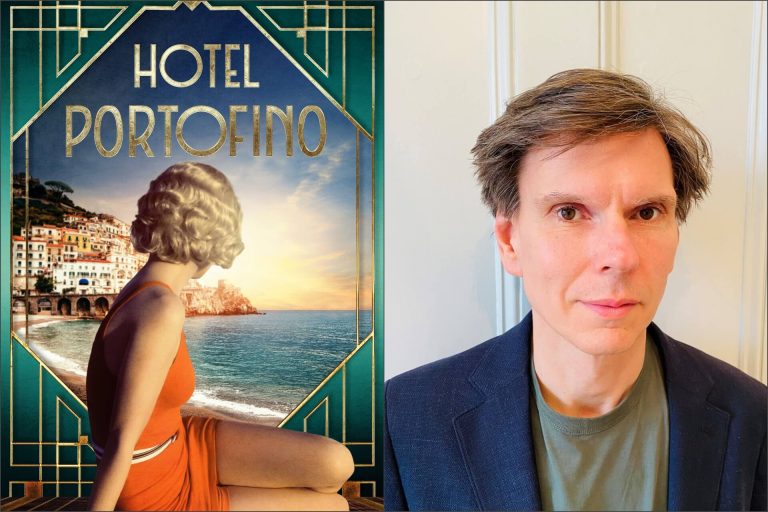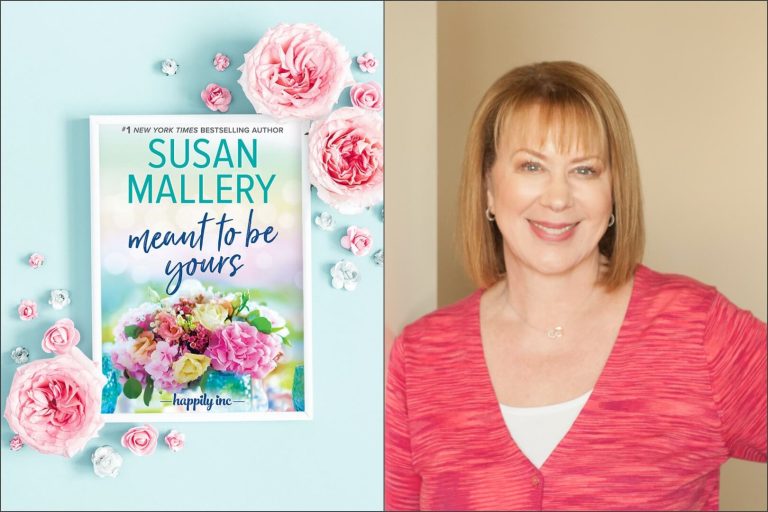Peter James is a New York Times and internationally bestselling author best known for his Detective Superintendent Roy Grace series, now a hit ITV drama, starring John Simm.
Over the course of 19 fast-paced thrillers, UK and global bestselling author Peter James has pitted Detective Superintendent Roy Grace against an obsessive stalker, a deadly black widow, a notorious gangster, a kidnapper, and a serial killer, plus assorted crooks, scammers, and murderers. In case after case, Grace has prevailed.
Yet, for more than 10 years, the dogged Brighton-based detective has been haunted by the mystery of what happened to his first wife, Sandy. Until now, only fragments of the truth have emerged.
In They Thought I Was Dead: Sandy’s Story, Peter James lets this much-talked-about yet little-heard-from character speak for herself.
Let’s get to know Peter as he talks favorite novels, what drew him into writing for the crime and thriller genre, story inspirations and much more!
What are some of your favourite books?
Brighton Rock – Graham Green
It might sound strange to call Green’s masterpiece of a crime thriller “uplifting” but I truly think it is – and it has a personal resonance for me: As a child growing up in Brighton, I read this for the first time when I was a teenager and when I finished it I vowed that one day I would try to write a crime novel set in my home town that was 10% as good as this one. In my view this is the novel that changed the face of crime fiction. Much thought I had always loved Agatha Christie and other crime writers of her era, these books were elegant puzzles which rarely touched on moral issues or aspects of human nature. Brighton Rock opened my eyes to the possibility. Here we have Pinkie, a nasty boy killer, just 17 years old, a murderer in charge of a gang of middle-aged misfits. Yet he is a devout Catholic, terrified of eternal damnation, and brilliantly conflicted. I don’t think any author has written a better last line – it is one that both shocks, but at the same time makes you smile.
Slaughterhouse Five – Kurt Vonnegut
Despite its dark title, this is one of the funniest books I’ve ever read and is my go-to novel whenever I feel in need to cheering up. Vonnegut’s wry humour shines throughout, occasionally turning into pure slapstick, but then pulling us up sharp as he takes us into World War 2 and the horrors of the firebombing of Dresden. The book is peppered with wonderful sayings and quotes, such as, “Good lord, grant me the courage to change the things I can, the serenity to accept those things I cannot change, and the wisdom always to tell the difference.” And: “I don’t know what’s going on and I guess I’m not smart enough to understand if someone were to explain it to me. I think we’re being tested by someone or something a whole lot greater than us, and all I can do is hang around and try to be calm and friendly and have a nice time until it’s over.”
Bonfire of the Vanities – Tom Wolfe
When I first read this novel about the spectacular fall of a spectacularly rich and naiive bond dealer, Sherman McCoy in 1980s New York I was literally blown away by the sheer exuberance of Wolfe’s writing. Brilliant descriptions of place and character and the incredible feeling of a “this could happen to any of us” train crash unfolding in front of our eyes. There are very few times in my life when I’ve finished a novel and straight away read it all over again. This was without doubt the defining novel of the 1980 Yuppie era – but also so much more.
The Two Faces of January – Patricia Highsmith
I’d never read Patricia Highsmith until eight years ago when I was invited to discuss her work on a panel at the Harrogate Crime Festival. I immediately embarked on a crash course of reading her novels and her short stories, and I can honestly say I’ve never enjoyed my homework so much. She has a terrific eye for characters who both fascinate you and make you squirm, to tiny detail and for establishing a sense of place. This particular novel is my favourite of all her work, I think largely because of its utterly repellent, but strangely compelling and endearing central character, an American conman, Chester MacFarlane, a long way from home, in Athens and in the last chance saloon.
Rebecca – Daphne Du Maurier
There is something wonderfully transporting when you know you are in the hands of a master storyteller at the very peak of their powers. This is a novel that I can never tire of re-reading, it thrills me, surprises me and shocks me with its wonderful twists and turns. Very few novels have the power to shock all over again each time you read them, few are so enriching and even less so real. It is a novel that I’m pretty sure ever thriller writer ever since has drawn from at some time, in some way.
The Day of the Jackal – Frederick Forsyth.
This was a true game-changer in the world of thrillers. It is a book I return to and re-read. Just how did Forsyth keep us so gripped, even though we knew Charles de Gaulle was never actually shot? I learned so much about the craft of writing suspense from this book and I know it has been the same for many others of my generation and younger.
When did you know you wanted to become an author?
Ever since I was a small child I wanted to be a writer – but I never thought I had any talent. When I was fifteen I won my school poetry prize and I had an inspirational English teacher who encouraged me. For my seventeenth birthday, my Dad gave me the best present ever – a portable electric typewriter and this big battleaxe of a lady who came to teach me to touch-type. She covered the keys up with sticky tabs and if I looked down at them she would whack my fingers with a rule and yell, ‘Don’t look down!’ I learned to touch-type as fast as any secretary, out of sheer terror – and it has stood me in good stead ever since!
What drew you into writing for the crime and thriller genre?
My fascination with the world of the police began back in 1982, when my home was burgled. I’d recently had my first novel, a spy thriller, published, and a young detective, Mike Harris, who came to take fingerprints, noticed it on a table. He gave me his card and told me to contact him if I ever needed research help on police matters for any future books.
My then wife and I became friendly with Mike and his wife, Renate, also a police officer. We started going to social events with them, and realized that almost all of their friends were other police officers – and that the world of the police is a very inclusive world. Officers view the police very much do view society as “us and them.” And they view the world through different eyes to the rest of us: For example, if most people walking along a street saw two men peering into a shop window, they would assume they were looking at something they might be going to buy. But if a police officer saw them, he would think, “What are these two men doing? Are they about to rob the shop? Are they doing a drug deal? Are they about to mug someone? I call it a healthy culture of suspicion.
A big part of the reason police socialize together, quite apart from the fact they are workmates, is that they are more comfortable in the presence of fellow police officers than “civilians”. They can talk about cases they are working on without having to worry that confidential information will appear in the papers the next day. And “gallows humour” which is a major part of the survival mechanism of all police officers and emergency service workers, is something they can share with fellow officers without fear of causing offence.
As I got to know more officers, I started to include more police work in my novels, and found, because I made a big effort to get not just my facts right but the whole culture of the police world right, that I was being increasingly invited to see different aspects of policing for myself, from a privileged insider standpoint.
My relationship with Sussex police is so strong they will phone me when they are doing an interesting operation or raid and ask invite me if I’d like to come along, and I am normally privy to the truth behind every major crime investigation that happens in the county. I have attended raids, arrests of major criminals, murder scenes within hours of their discovery, numerous post-mortems, and an exhumation. I do of course have to respect confidentiality and comply with forensic guidelines at crime scenes. often find myself entering a restaurant, café or bar with a police officer and I’ve noticed that before stepping over the threshold, that officer will stop and clock every single face in the room before entering – because they don’t want to have spent an hour having lunch or a drink sitting two tables away from a villain they’ve been looking for – and didn’t spot! And If I’m late for a rendezvous in such an establishment, I will always know where the officer will be sitting: With his or her back to the wall, facing the entire room and the front door. It is known as the policeman’s chair.
The best compliment I’ve been paid was an email I was sent recently from a detective sergeant in Brighton: He told me he was driving through Brighton and suddenly spotted a villain on whom there was a warrant out for. He jumped out of the car and chased this villain through Brighton for over a mile, and finally rugby tackled him and handcuffed him. As he was booking into the Custody Centre, the villain turned to him and said: “You’re just like a cop in a Peter James novel!”
With writing so many novels featuring Detective Roy Grace, where do you draw your story inspirations from?
Much of my inspiration comes from true stories I have heard during the time I spend out with the police (an average of one day per week) or something that has intrigued me. I’m a great believer in that adage that “truth is stranger than fiction” and I am very interested in different issues that affect us all. All of my Roy Grace novels have a different theme in them:
The first, Dead Simple, was inspired by the brutal and sometimes really dangerous things that men do to each other on pre-wedding stag night parties. The second, Looking Good Dead, was inspired after I was asked by a police surgeon in Brighton to study a piece of footage in a video seized by the police that showed a teenage girl being stabbed to death. He wanted to know if it was real or if she was acting. It was real for sure, and opened my eyes to the horrific world of snuff movies. The third, Not Dead Enough I wrote about one of the world’s fastest growing crimes – identity theft. The fourth, Dead Man’s Footsteps combined two subjects I wanted to write about: The dream of so many people to fake their disappearance and create a new identity and life in a different country, and the horror of New York on the day of 9-11. The fifth, Dead Tomorrow was inspired by an approach I had with a famous documentary maker, who had been trying to make a documentary on the sinister world trade in human organs. She discovered that in Columbia, some organized criminals were making more money from the trafficked organs of street kids they murdered, than from drugs – she sent two researchers there and they were both murdered. She then gave me all her research material to write the story as fiction.
The most current, Dead Like You was inspired by a really chilling rape case: I was at a lecture four years ago given by the Senior Investigating Officer on serial rape case: Between 1983 – 1987 a man in South Yorkshire, England, dubbed The Rotherham Shoe Rapist brutally raped a series of women in the Rotherham and Barnsley area. He would strike late at night as they were leaving pubs or nightclubs, truss them up, and after he had finished, would take their shoes as trophies. Suddenly, he stopped offending, and the trail went cold.
In 2003 a woman in the Rotherham area was stopped for drink-driving and as is standard procedure, her DNA was taken. There was a familial – partial – match with the rapist. The police went to see her and asked her if she had a brother. She replied that she did, James Lloyd, but he could not possible be their man as he was a very successful and respectable businessman. When the police had gone, she phoned her brother and told him about this strange visit. That night he tried to hang himself in his garage.
James Lloyd was 47, nice looking, the manager of a large printing company, a freemason, married with two kids who adored him, and generally a pillar of his community. When they police raided his office the next day, they found a trapdoor beneath the carpet, under which was a cache of 126 stiletto heeled shoes in cellophane.
I was captivated by this story – because I found it so chilling. I’ve always been fascinated by how the most seemingly normal people often are the most monstrous criminals. The UK’s worst ever serial killer, Dr Harold Shipman, being a classic example, but there are many more. James Lloyd fitted this mold exactly. I was also interested to explore how attitudes in the police toward rape have change dramatically in the past decade, yet still rape has an appalling clear-up rate, large because so few victims actually report it. The clear-up rate for murder in the UK is 98%, for rape it is just 6&.
However, in Dead Man’s Grip, I slightly had the tables turned, in a very chilling way….. It wasn’t until after I had written the book that I discovered that something very similar had happened in true life! About 25 years ago the young son of John Gotti, the Capo of the NY Mafia, was knocked off his bicycle and killed by a drunk driver. His mother insisted on revenge and two weeks later the driver disappeared – the police know he was kidnapped, tortured and murdered – but his body was never found.
A number of my Roy Grace novels have been at the suggestion of the Police. For instance, Dead at First Sight is about the murky world of fraud through online dating. Sussex Police approached me early in 2017 and told me that people in Sussex alone – just one of 43 counties in England – had been conned out of £15m in the past three years alone by people they’d met online, through dating agencies, looking for love. They said they would show me their files (not the names of course) if I would consider writing a Roy Grace novel that would highlight this.
My next Roy Grace novel, coming out this autumn, One of Us Is Dead was inspired literally by a story told to me by the son of an old friend. People are always telling me stories they think will make a great book – and they may be great stories but they are not going to make a book – at least not one I want to write. But on this occasion my friend’s son told me that ago he’d met a character who was, in his words “a bit of a villain” who told him that that he’d just been to a funeral, in a country church. He’d arrived late, in torrential rain, and the church was rammed, so he’d had to stand at the back. Halfway through the service he noticed a man, sitting six pews in front of him, whose funeral he’s been to two years previously – and given the eulogy at! He tried to get to him at the end of the service, but couldn’t get through the crowd and by the time he got outside his “dead” friend had long vanished. I thought, Yesssss! And that is pretty much the opening chapter of One of Us is Dead.
Tell us why it was important to focus They Thought I was Dead on Roy’s first wife, Sandy.
When we first meet Detective Superintendent Roy Grace, he is a senior homicide detective working in Brighton, Sussex, a famous city on the south coast of England that has had a long criminal past. Back in the 1930s Brighton was known as the Crime Capital of the UK and Murder Capital of Europe. It is a title it has never quite lost, luckily for me! When we first meet him in Dead Simple, he is coming up to his 39th birthday and we learn that 9 years earlier, on his 30th birthday, his wife, Sandy, whom he loved and adored, vanished without trace.
While he has continued to function as a very effective homicide detective, for nine years he has been looking everywhere for her, wondering what happened. Did she run off with a lover? Get abducted and killed by a maniac? Have an accident? Lose her memory? Take her own life somewhere? He has even tried mediums and clairvoyants, without success. During the course of the next nine novels, as Roy moves on into a new relationship, falling in love again, we gradually learn more and more about Sandy, and the truth of what happened to her… and that perhaps she wasn’t the very perfect wife that Roy idolized…
When I was asked by my publishers, back in 2003, if I would like to create a new fictional detective I thought long and hard about all the homicide detectives I knew, after years of spending time with the police on my earlier novels. First and foremost what they do is solve puzzles – very homicide is a huge puzzle of hundreds if not thousands of pieces that have to be painstakingly put together. I thought it would be interesting to create a detective with a personal puzzle of his own he could not solve. My plan was to set up the mystery of Sandy in the first book, Dead Simple and resolve it in the second, Looking Good Dead. But when Dead Simple was published, to my surprise and delight it became an instant global hit and suddenly we were inundated with emails and letters from around the world, from readers speculating what might have happened to Sandy. So I thought, hey, I could have some fun and keep the mystery going.
So I did this, seeding in a little bit more about her in each successive Roy Grace novel and my readers seemed to love the increasing intrigue. More and more emails and letters speculating about her came in and I kept it going for fourteen books. But I always think it is important in life to quit while you are ahead, as the saying goes! I remember one email from a fan saying, “Dear Mr James, I’ve just worked out I’m a lot younger than you, and I imagine I’m a lot fitter, which means you are going to die before me. I hope you’ve left the secret of what happened to Sandy safely in your publisher’s vaults.” !!! And then a very heart-breaking one: “Dear Mr James, I am 89 and the doctors tell me I don’t have very long to live. Please tell me the secret of what happened to Sandy and I promise I will take it to the grave with me.”
I suddenly decided it was time to reveal the truth! Initially I planned to write it as a 100 page novella, simply called “Sandy’s Story”, but as I began to write, I found her increasingly captivating – and I wanted to know more about her myself! And I realized to do her story justice it needed a full-length novel – and I had such huge fun writing it. And I’m particularly happy with the ending, which will surprise every reader who thinks they know the ending….!
What can readers expect from this novel?
There are two aspects really. The first is that this can be read as a standalone thriller even if you’ve never read a Roy Grace novel. But for Roy Grace fans they will find a lot of gaps about Sandy filled in – and plenty of surprises! Perhaps the biggest surprise of all will be that she wasn’t quite the perfect wife who Roy, in his mind, has always idolised. And for everyone who thinks they know the ending, the last two pages will turn that on its head!!
What are you currently reading and what’s on your TBR (to be read) list?
I’ve recently finished Lessons in Chemistry, by Bonnie Garmin, which I loved. I’m a big William Boyd fan and I’ve been asked by his publisher to read his latest, Gabriel’s Moon – which I’m halfway through and loving. On my TBR list to read next is The Bee Sting by Paul Murray.
